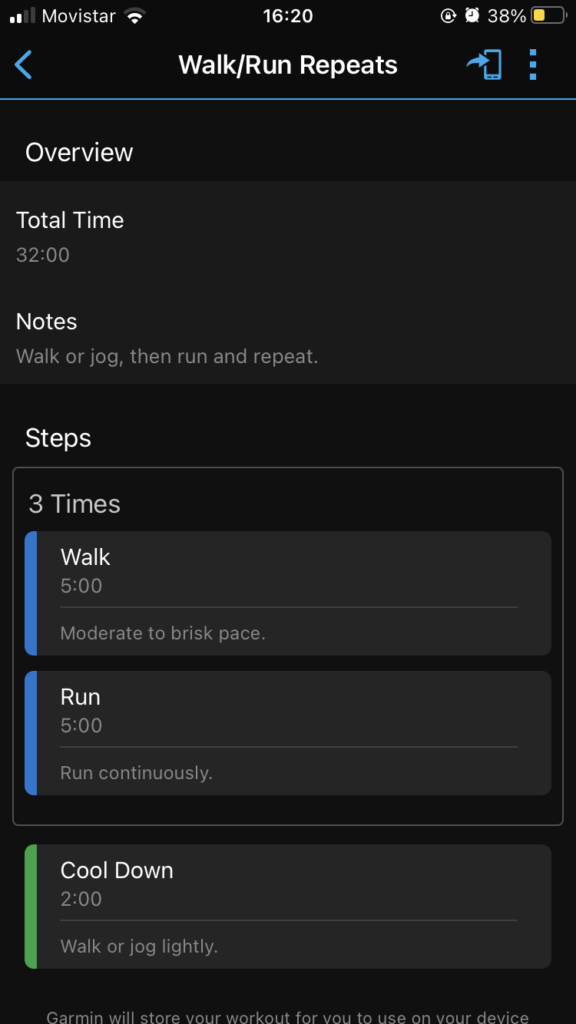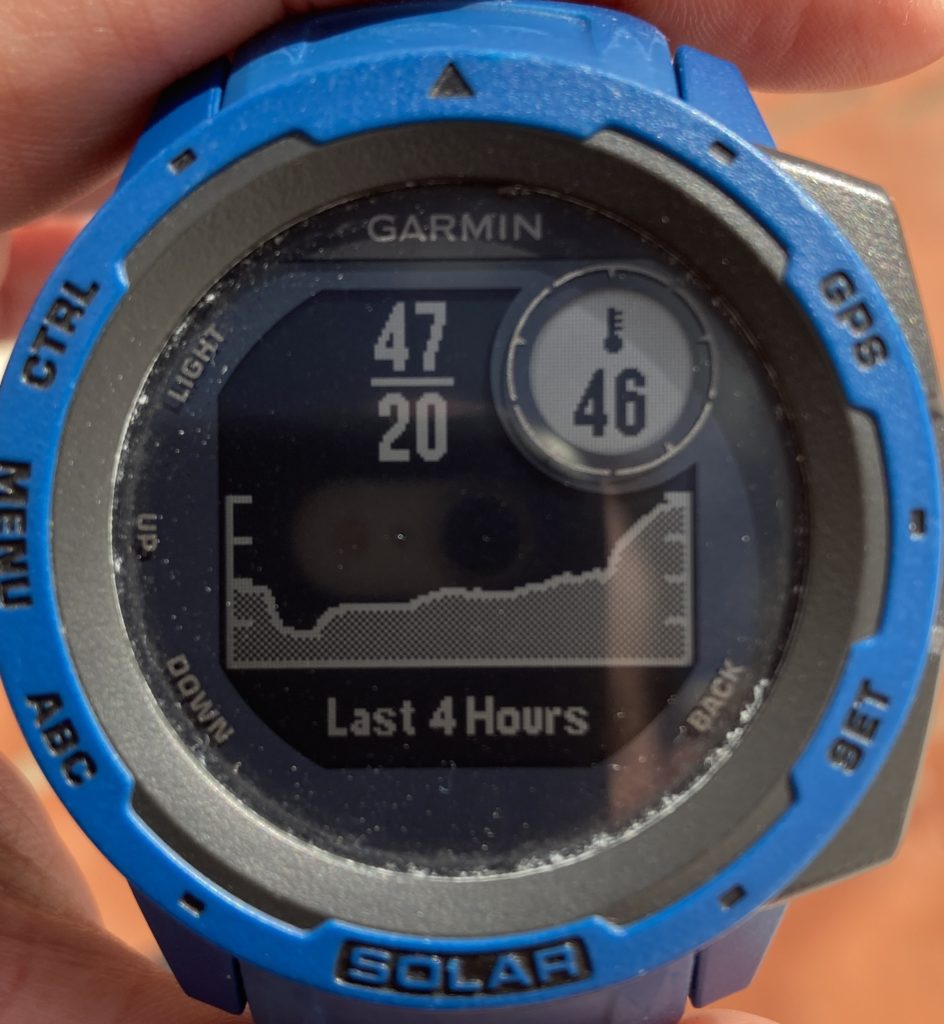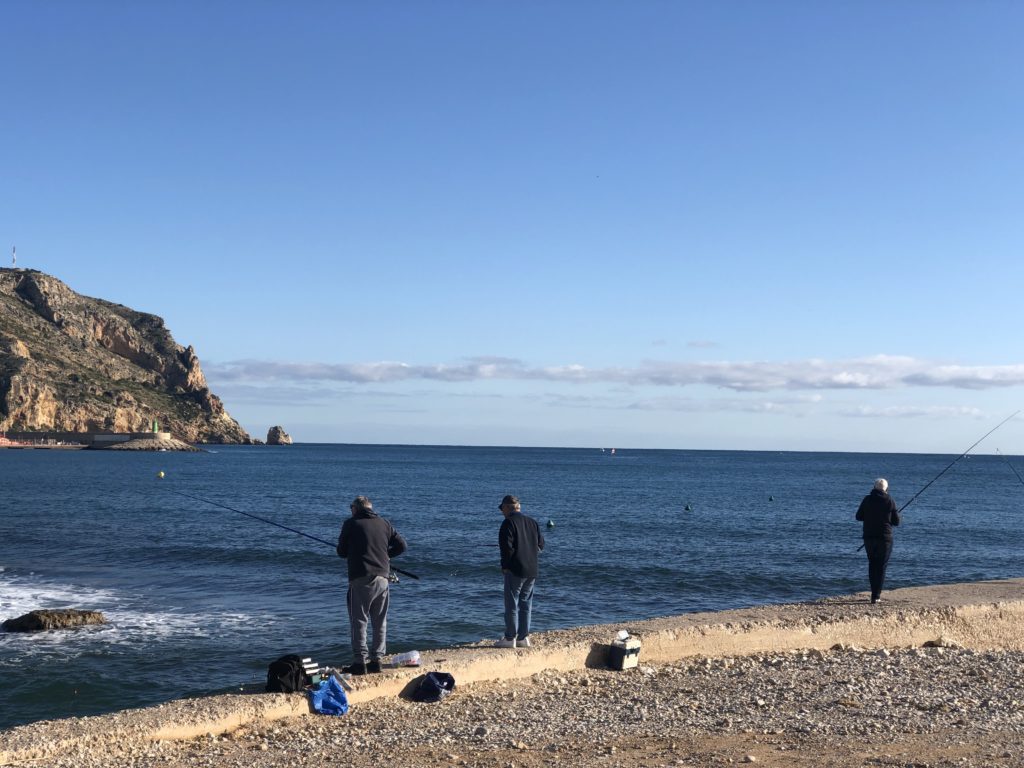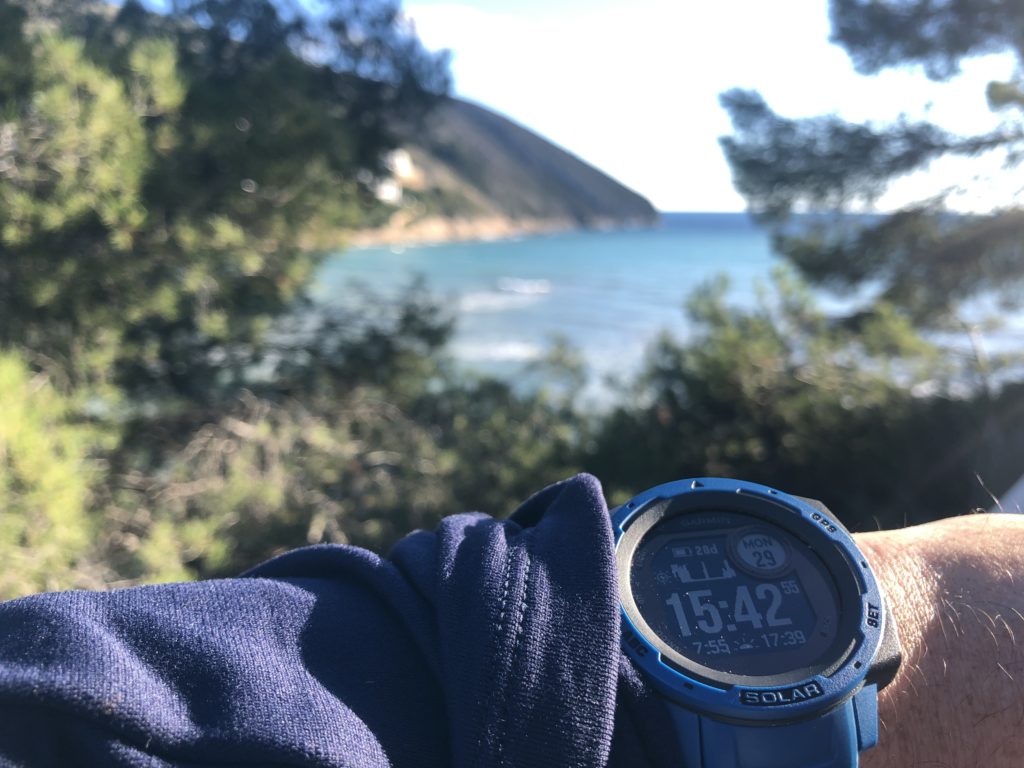I bought the Garmin Instinct Solar because I was interested to see how the Solar option works. As with most watches the solar panels take several hours to recharge the watch, even during summer heatwaves. The Solar part is great, if you’re in Spain and leave your watch to recharge in the sun while you do something else.
This leaving the watch alone for hours, as it charges, is a paradox, since other metrics cannot be tracked, rest, heart rate, steps. They’re all stagnant whilst the watch charges for several hours in the sun. Having said this, if you use the watch as a watch, and you spend the entire day in the sun, then it will fill its role fantastically. I had it tell me that it had 99 days of power, at the current rate of charge and discharge, while in Spain.
Then Comes Winter
In winter we wear long sleeves, days are shorter, and we spend more time indoors. This means the solar aspect of the watch is barely used, unless we strap it to a bag, and make sure that it is facing the sun. This isn’t a likely scenario so it’s better simply to rely on recharging it from a usb port.
It Sulks
Of course it’s a computer, so it just runs programmed but I have found, on plenty of mornings, that it doesn’t want to sync with the phone. I will tell the phone several times “refresh” but nothing. I just have to wait until it decides that it wants to converse with the phone and update the stats. This frustrates me immensely. When I am supposed to wear a watch 24 hours a day, for it to get my HR, body battery status, step count and everything else and it doesn’t bother to connect with the phone I have a problem.
Forced Loyalty
I don’t like the term addiction so I’m going to use the term forced loyalty instead. Until the Garmin Instinct watch I was very happy with Suunto devices. I’d wear them and they’d sync all the data when I got home. Then Suunto offered the option of step tracking and heart rate monitoring and I was happy with that.
Then when I got the Apple watch Apple wanted the same loyalty, and then Garmin wanted the same loyalty and at this point you have to make a decision. “Am I the type of idiot who walks with two or three watches at all times? Do I wear just one and lose interest in the step data?
In the end I dropped the Suunto, retired from active service after several years of good use. It’s because of a weaker battery that I even shopped around for new devices.
Cycling and More
For a while I wanted to get a Garmin cycling computer, and as I cycle this would make sense. The issue is that I like quite a few sports, so having a device dedicated to just one sport would be a shame. It would lie dormant when I am not cycling, for weeks, or even months at a time. I workout every day so the Garmin Instinct made sense. I chose the colour and model I did for a simple reason. It was the cheapest option.
Aside from the watch I also saw that I could get the speed and cadence sensors at an affordable price, and wireless. They were easy to install and use within minutes and have been reliable sense.
Thinks I like
- The Sunrise and sunset view. It shows both.
- It also shows lunar phases
- The body battery concept is interesting but I don’t real use it.
- The Virb remote, should you own a VIRB that you have mounted for remote use.
The Challenges
Garmin has walking, cycling, running, yoga and body building challenges every month that you can participate in. Some of these challenges are short weekend challenges. Some challenges are month long challenge, for example 300,000 steps in a month of cycling 700 kilometres, or more. Some of them are easy to reach, and some of them are more challenging. Yet more are special day events, for example Halloween or other. You can participate in as many, or as few challenges as you like each month, and it doesn’t really matter whether you succeed or fail, except for collection of badges you end up with.
Insights
One of the encouraging, or discouraging screens is the Insights screen. On this screen you can see how well or how badly you are classed depending on sport, age and gender. I am in the top 1percent for floors climbed, top 22 percent for Sleep, top eight percent for steps per day but am not classed for cycling, swimming or running, due to not doing these sports enough recently.
Battery
After one year of use of this watch I have not had issues with this battery. I think it has always lasted throughout my workouts. After a year of daily use the battery still seems fine and I can still go for several days before having to recharge. I do turn off oxygen stats though because that halves the battery life from over 27 days to just 10. The data is not that accurate, so not that interesting anyway.
As I mentioned earlier if you wear the watch and use it as a step counter, then, with the Spanish sun it will eventually display that it has 99 days of battery left, so if you want a sports tracker that you forget about for three months then this is perfect. I say three months, but in practice that’s the maximum number of hours it can display. If I remember correctly it then displayed infinity.
And Finally
Two or three times I selected the wrong sport. I chose walking when I was cycling, which was frustrating as it meant that I missed some data from the start of a ride or two, and thus an opportunity to see how big an effort I made.
As with plenty of sports watches it takes a few seconds to detect the satellites and if you’re on a phone call or distracted in some other way, then you tell it to spot satellites but you forget to tell it to start tracking and timing. Result, you do an entire walk or bike ride and you are left with a step count.
Summary
If it wasn’t for the decision it takes not to synchronise on some mornings, despite being worn 24hours a day I would love this watch, instead of really like it. If it wasn’t for that I would never have considered replacing it. With 27 days of battery in theory, after over a year of daily tracking use for one and a half hours a day, it has been great for cycling walking, cycling, and hiking. It also plays well with the Garmin speed and cadence sensors. This provides us with a cheap versatile solution for cycling, without the nuisance of a single purpose device.
Compare the old and new watches
This watch was at least 100 francs cheaper than the Apple Watch Series 4 and I never worried about breaking it, or worried about the battery being too low to finish a walk or bike ride. It doesn’t need to be charged every day, and the strap doesn’t start to smell after weeks of being worn. If you’re looking for a lower cost watch then this is a good solution.
One of the reasons I switched from Suunto despite loving their products, and that they are a European company is that they went for Android and Google wear rather than their own watch OS. Their battery life declined and the niche they were in was lost. Suunto also stopped the web interface for Movescount, so that it became mobile only. That’s a shame because I loved Movescount and Sportstracker. Garmin Connect is a nice alternative nonetheless.











